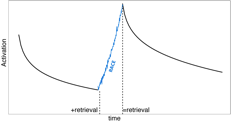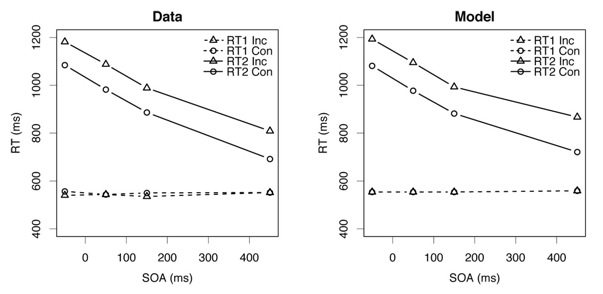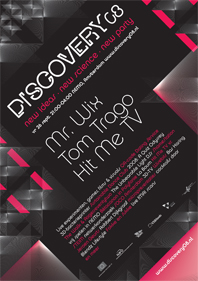2008
Cognitive Modeling on LinkedIn
01-11-08 09:43
In an attempt to create an online community of people interested in cognitive modeling, we started a Cognitive Modeling Group on LinkedIn. The group is intended at everyone who is interested in formal modeling of cognition. Frameworks of interest include cognitive architectures (e.g., ACT-R, Soar, or EPIC), Bayesian models, mathematical models, multi-agent models, connectionist models, etc.
Click the image to join!

(Also check out the Facebook group :-)).
Click the image to join!

(Also check out the Facebook group :-)).
Discovery 08
18-08-08 15:29
Vrijdag 26 september 2008 zal in NEMO in Amsterdam Discovery 08 plaatsvinden. Dit jaar zal AI@Rug ook deelnemen met live kunstmatige-intelligentie-onderzoek.
Discovery 08 is een unieke uitgaansnacht die draait om het experiment en de kick van nieuwe dingen ontdekken. Live muziek, live wetenschappelijk onderzoek, DJ's, VJ's, cocktails, film, installaties, performances, experimenten, visuals, games, presentaties.
klik hier voor meer informatie.
Discovery 08 is een unieke uitgaansnacht die draait om het experiment en de kick van nieuwe dingen ontdekken. Live muziek, live wetenschappelijk onderzoek, DJ's, VJ's, cocktails, film, installaties, performances, experimenten, visuals, games, presentaties.
klik hier voor meer informatie.
Webpage on RACE
31-07-08 15:07

Download RACE Module
11-07-08 14:07
You can now download the RACE module for ACT-R! RACE (acronym for Retrieval by ACcumulating Evidence) is a new memory retrieval mechanism for ACT-R, that is capable of predicting the activation dynamics during the retrieval from memory. With RACE it is possible to model semantic intereference effects in ACT-R.
Download here the RACE module. The module has been tested for Lispworks 5.0 and ACT-R 6.0 . You need to have the old vision module installed (avaliable in the “extras” folder of the ACT-R distribution).
Update: RACE is now also available for the new vision module (download here).
Download here the RACE module. The module has been tested for Lispworks 5.0 and ACT-R 6.0 . You need to have the old vision module installed (avaliable in the “extras” folder of the ACT-R distribution).
Update: RACE is now also available for the new vision module (download here).
Presentation at CogSci2008
04-06-08 21:31
This summer I will present my research on the memory retrieval process at the Annual Cognitive Science Conference in Washington DC. The talk will be on a cognitive model with which we are able to account for remarkable latency differences in Stroop and picture-word interference tasks.

The figure displays the model’s fit to a Stroop data set (Fagot & Pashler, 1992 Experiment 7) under dual-task conditions. RT2 indicates the reaction times for the Stroop task. RT1 indicates the reaction times on another task that is performed concurrently. Inc and Con refer to the incongruent (RED) and congruent (RED) Stroop stimuli respectively.

The figure displays the model’s fit to a Stroop data set (Fagot & Pashler, 1992 Experiment 7) under dual-task conditions. RT2 indicates the reaction times for the Stroop task. RT1 indicates the reaction times on another task that is performed concurrently. Inc and Con refer to the incongruent (RED) and congruent (RED) Stroop stimuli respectively.
Presentatie op Bessensap
28-05-08 15:08
NWO organiseert jaarlijks Bessensap. Dit evenement brengt journalisten, redacteuren, voorlichters en mediagenieke onderzoekers dichter bij elkaar. Het motto: wetenschap ontmoet pers, pers ontmoet wetenschap. Dit jaar zal ik een presentatie geven over ons onderzoek naar de Publicatie Assistent. Deze toepassing selecteert referenties die voor specifieke wetenschappers relevant zijn, op basis van een geheugenmodel dat wij ontwikkeld hebben.

